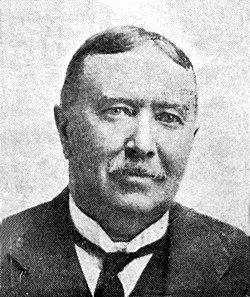| Department | Title of Minister | First Minister (Electoral District) | Senior Permanent Officials |
|---|
| Department of the Premier | Premier | Sir Charles Patrick John Coghlan (Bulawayo North) | Chief of Staff
Secretary to the Premier & Chief Clerk to the Legislative Assembly |
| Department of Native Affairs | Minister of Native Affairs | Chief Native Commissioner |
| Department of the Colonial Secretary | Colonial Secretary | Sir Francis James Newton (Mazoe) | Secretary to the Department of the Colonial Secretary
Controller of Printing & Stationery |
| Audit Department | Auditor-General
Assistant Auditor and Inspector
Inspector
Senior Examiner |
| Department of Health, Education and Internal Affairs | Medical Director
Director of Education |
| Department of the Treasury | Treasurer | Percival Donald Leslie Fynn (Salisbury North) | Secretary to the Treasury
Commissioner of Taxes
Controller of Customs
Postmaster-General |
| Department of the Attorney-General | Attorney-General | Major Robert James Hudson (Bulawayo North) | Solicitor-General
Secretary to the Law Department & Legal Adviser
Senior Judge
Judge
Master of the High Court
Commissioner of Police
Registrar of Deeds |
| Department of Defence | Minister of Defence | Secretary to the Department of Defence
Commandant of Southern Rhodesian Forces |
| Department of Mines and Public Works | Minister of Mines and Public Works | Howard Unwin Moffat (Victoria) | Secretary
Accountant
Inspectors of Mines (2)
Mining Commissioners (4)
Registrar of Claims
Beacon Inspectors (3) |
| Public Works Department | Director of Public Works
Assistant Architect
Assistant Inspectors (2) |
| Roads Department | Engineer-in-Charge of Roads
Assistant Road Engineers (2)
Assistant Road Engineer and Surveyor |
| Geological Survey | Director of Geological Survey
Geologists (2) |
| Department of Agriculture | Minister of Agriculture and Lands | William Muter Leggate (Northern) | Director of Agriculture
Chief Veterinary Surgeon
Director of Veterinary Research |
| Department of Lands | Director of Lands & Surveyor-General |
